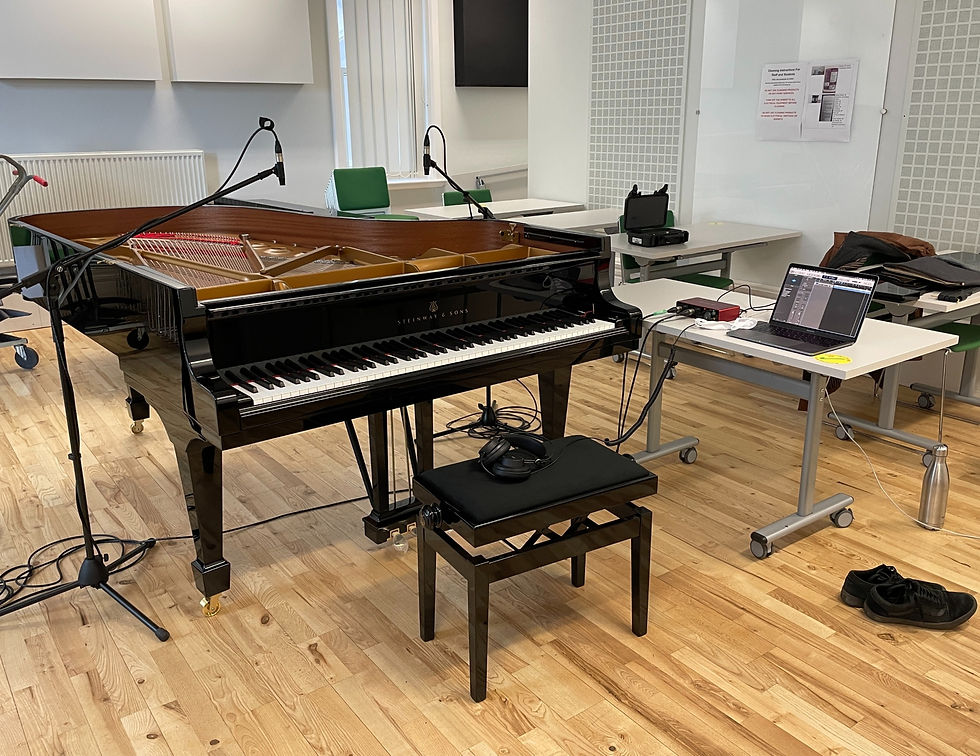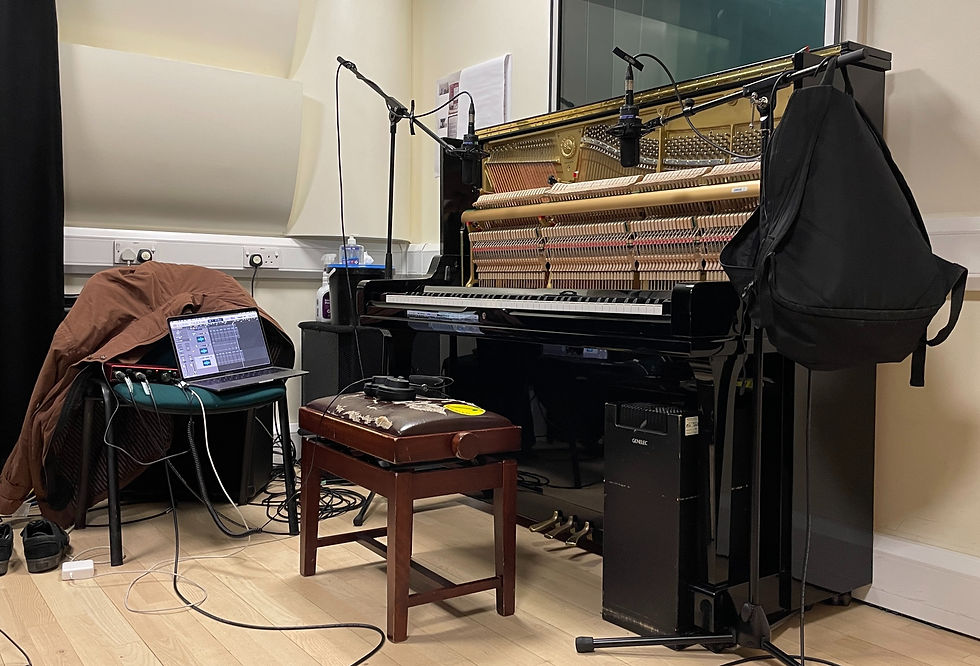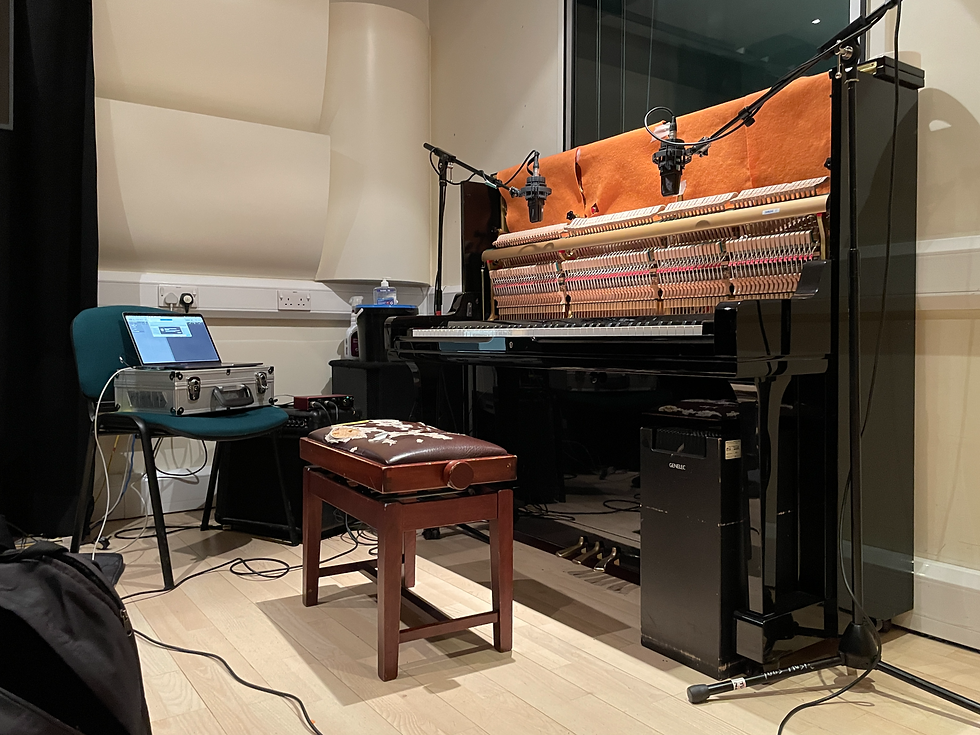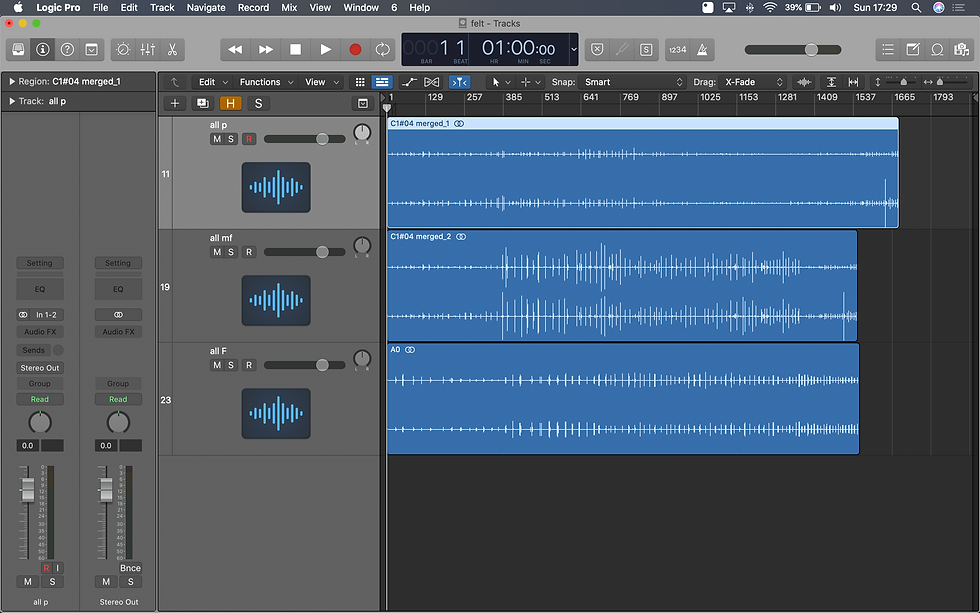Sampling a Piano
- thomaslongshaw7
- May 5, 2021
- 3 min read
Updated: May 24, 2021
Research (20/03/2020)
Before it was time to start researching how to sample a piano, I optimistically emailed some popular plugin manufacturers, informing them of what I am doing and asking if they were willing to share any helpful information. I was pleasantly surprised to hear back off Henry at Spitfire Audio, who pointed me towards three youtube videos:
From these videos, I have also learnt about Pianobook; a communal sampling project set up by Christian Henson (a co-founder of Spitfire Audio) that offers a number of helpful guides on sampling a Piano.
As suggested by Pianobook, I've decided to record the piano across the cycle of fifths, creating a continuous recording of the notes: C0, G0, D1, A1, E2, B2, F#3, C#4, G#4, D#5, A#5 and F6. The microphone placements will depend on the piano I am sampling, though I am planning on using overhead microphones for a grand piano and stereo microphones placed at the player's head height for an upright.
Attempt 1 (08/04/2020)
After the University of Sheffield had become an All-Steinway School, I decided to sample one of the new Steinway Grands. I prepared the piano by removing the lid and moving it to the centre of the room. From here, I set up overhead stereo DPA 4006C microphones running into a Focusrite Scarlett 4i4 interface than was recording into Logic Pro X.

After spending the first half of the day recording, I tried loading the samples into EXS24 to test what I had done so far. I was disappointed to find that the audio quality had been significantly reduced by the pitch adjustments and the changes between note-zone was painfully obvious. There was also an issue with the piano's location, resulting in lots of sound-bleed from other students practicing. Following this, I decided to call it a day and rethink my strategy.
Attempt 2 (09/04/2020)
The following the day I booked one of the university studios with a piano, in an attempt to minimise sound bleed. Having reviewed the samples from the previous day, I realised the DPA microphones were picking up every detail, even the unwanted ones (as omni-directional microphones do), so decided I would use a pair of Audio Technica AT4050s instead. I removed the front panel and fall board and placed the microphones either side at roughly head height.

I decided to try and record the circle of fifths for a second time, though this time planned to record four samples for each note in a bid to capture takes that flowed into the other sample zones smoothly. Having completed this, I cut the samples and loaded them into EXS24 to see if my efforts had paid off. Whilst a definite improvement, I was still not satisfied with the end results and so once again returned to the drawing board.
Attempt 3 (22 - 23/04/2020)
Following the previous attempts, I realised to create something that sounded natural I was going to need to sample every note at multiple velocities. I also wanted to change the character of the piano, so I bought some felt to layer between the strings and hammers. I booked out the same studio used in attempt 2, as this had minimised any noise bleed from the surrounding environment. The piano was prepared in the same way as before, with the front panels removed and microphones placed at head height. I then cut the felt to size and taped it to the top of the piano, allowing it to dangle freely between the hammers and the strings.

For each velocity layer, I recorded the samples in individual octaves and joined the takes together to make a continuous audio file. I then repeated this twice more for the other velocity layers. After a quick test in EXS24, I found the samples sounded much more natural than those from the previous attempts and the felt had also helped create a more intimate feel. I decided these were the samples I wanted to use, so separated the takes into individual Logic sessions ready for editing.
Before reassembling the piano and returning the room to its original state, I decided to record 30 seconds of room noise as this would likely come in use during the editing process.




Comments